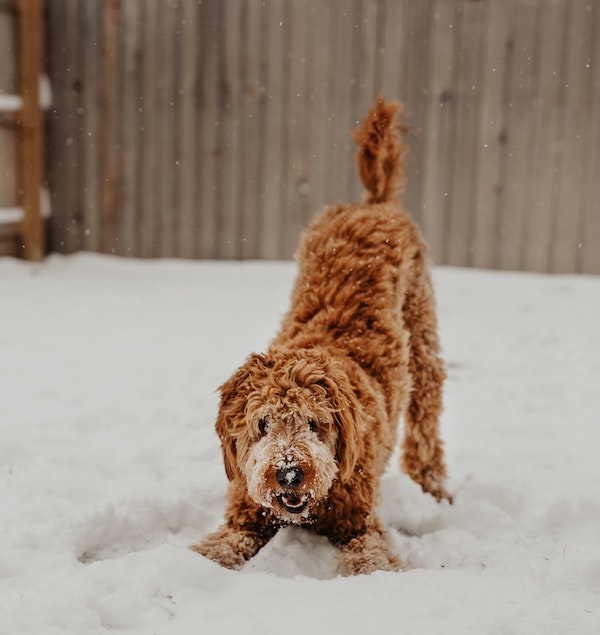Winter Paw Care for your Pets
We all know that in order to prevent dry, cracked skin in the winter we must take care of our hands. But did you know you should do the same for your pets’ paws? We’ve compiled a list of the best tips and products to help keep your pup’s paws safe and healthy this winter.

Photo by Brooke Cagle on Unsplash
Keep their pads moisturized
During the winter, the dry environment can cause dogs’ paw pads to crack. To avoid this, use a paw moisturizer or wax to help keep those pads in tip top shape. Some of the waxes are even designed to protect pads from the weather during walks and playtime outside. One of the most popular paw waxes is Musher’s Secret, an all natural wax used to protect paw pads year round. Another popular moisturizer is Paw Soother from the Natural Dog Company, which comes in a stick (like deodorant) for mess-free application. You can also try to make your own! Check out this recipe from the American Kennel Club.
Even if you do put paw balm on your pup’s feet before your walk, be sure to avoid slushy and salty areas while outside. Use pet safe de-icers and encourage your neighbors to do the same, but be alert on walks to avoid as much of the chemical based snow melt as possible.
Protect them with booties
For pups who live in harsh climates or have sensitive skin/thin coats, consider purchasing well-fitting booties for their feet. Booties can protect your dog’s paws from injury or cracking and can be a source of extra warmth.
Be sure to properly acclimate your pup to the booties. It may be funny to watch your dog walk strangely through the house with their new kicks, but the stress of wearing something unfamiliar on their feet can overwhelm some dogs. Give your pup plenty of treats and praise and keep the initial wearing sessions short until they get used to their new boots.
Keep their feet clean
It’s not just the dryness and cold that can be harmful to your dog’s feet. Ice and snow can become compacted in between your pup’s toes, causing them discomfort. Both chemical and non-chemical snow melt methods can cause irritation and even burns on their pads. If your pup then licks their feet to clean them when they get home, they could be ingesting harmful substances.
Be sure to check your pet’s feet daily, especially when coming back from a walk or playtime outside. Inspect between the toes, around the base of the toenails, and under the pads to make sure they are clean and healthy and that you catch any issues before they get worse. If possible, rinse your dog’s feet with warm water and dry with a towel when they come in from outside to ensure all snow, ice, and chemicals are removed.
In addition to keeping their paws clean, keep your pup’s paws well groomed. Trim the longer hairs between the toes to avoid snowballs and keep nails short.
Pay close attention to the temperature when you are out walking through the winter. Chances are if it’s too cold for you, it’s too cold for your dog. Dogs’ paws can get frostbite just like our hands and feet. So keep those potty breaks and games of fetch short and sweet in the coldest days to keep your pup’s paws from any danger.
Keeping the rest of your pup’s body healthy is also important for the health of their feet. Make sure they stay hydrated throughout the dry winter and keep their body warm with cozy beds inside and jackets outside.
